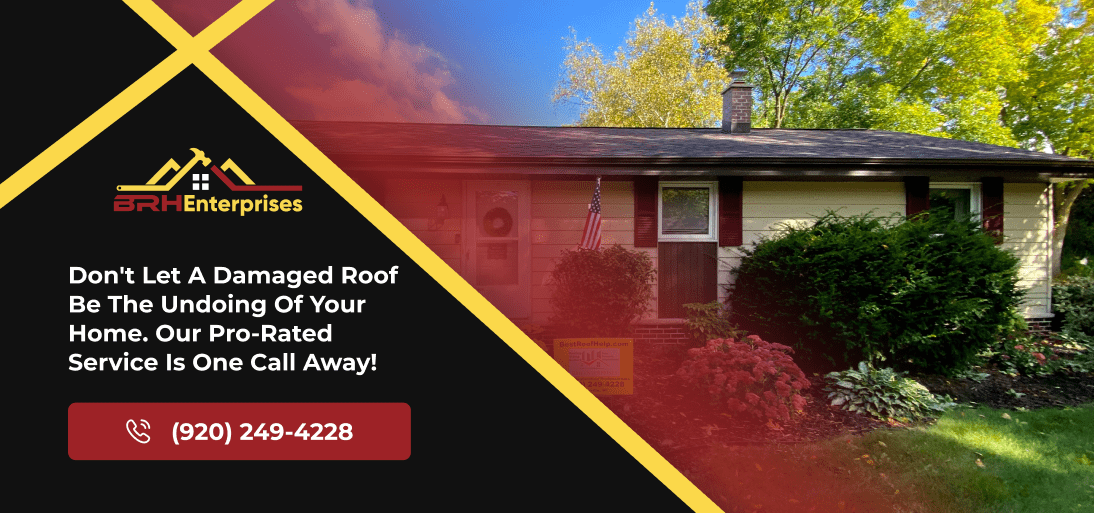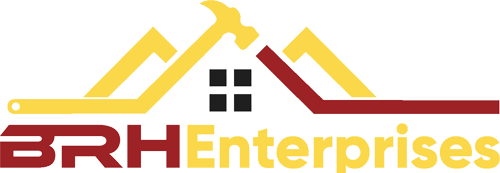The Ultimate Checklist for Dealing with Storm-Related Roof Damage
Estimated Reading Time : 6 Min.
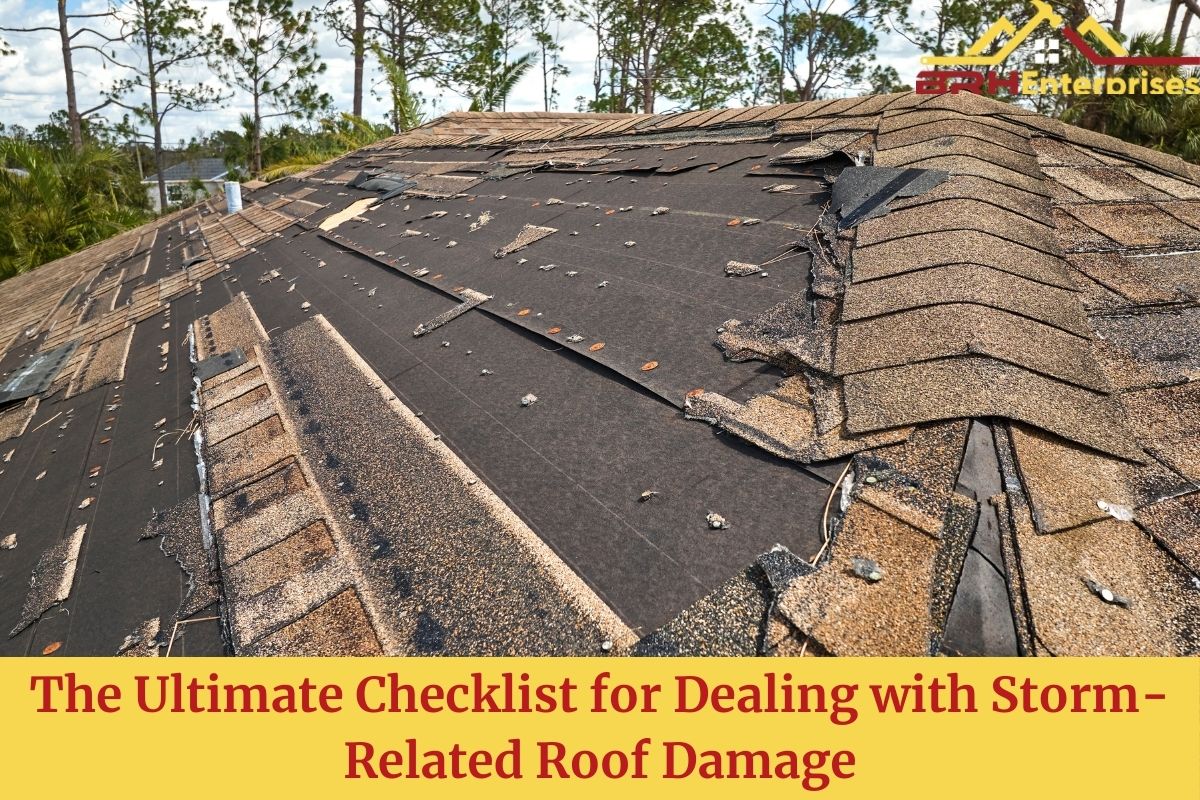
Protecting our homes from harsh weather is essential. Our roofs, in particular, bear the brunt of this challenge, facing storms that come with flying debris, hail, rain, and strong winds. Even the sturdiest roofs can suffer significant damage under these conditions. However, we can prevent much of this damage by acting quickly when we spot any issues. Taking prompt action not only reduces our worry but also helps us avoid costly repairs.
Keep reading to learn about the various kinds of damage that storms can inflict on roofs and how you can actively work to protect your home.
Common Types of Roof Storm Damage
When we consider storm-related roof damage, you’ll notice that it typically falls into four primary categories. Each type of damage is unique, with distinct causes and characteristics. Let’s take a detailed look at each of the common types of roof storm damage.
1. Wind Damage
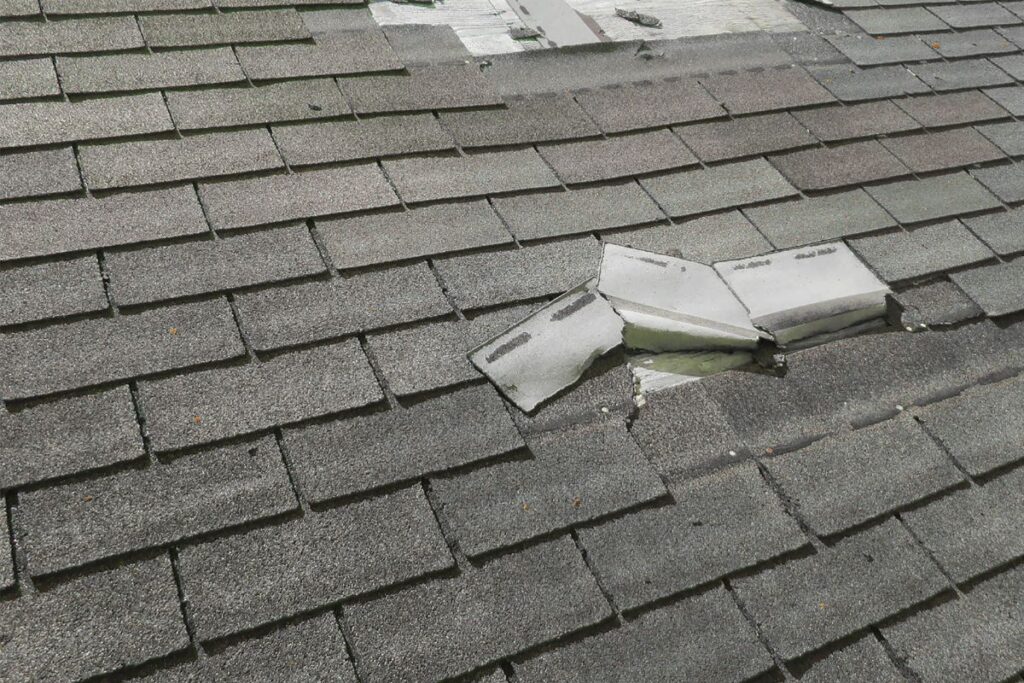
Storm-related winds can propel debris into your roof, which can cause holes and material damage, which can result in water leaks. Moreover, high winds lift up and loosen shingles, making them more susceptible to water intrusion and structural damage. Roof deterioration is accelerated, and its lifespan is shortened by prolonged exposure to extreme weather. Prolonged exposure to persistent wind can weaken the fastening system securing roofing materials and your gutters in place, thereby compromising the structural stability of the entire roofing system.
2. Hail Damage

Although not as common as wind or water-related incidents, hail storms can inflict significant damage. In 2020, around 6.2 million properties in the United States experienced hail events, highlighting the widespread impact of hail damage on roofs.
Hailstones have the potential to puncture holes in shingle materials or cause severe dents in metal roofing sheets, often necessitating immediate repairs.
Furthermore, a single hail event can result in up to $1 billion in property loss. It’s not just about the appearance; neglecting hail-induced damage increases the risk of leaks and subsequent interior damage to the property. Therefore, it’s crucial to address any hail damage promptly to safeguard the integrity of the roof and prevent further costly issues.
3. Water Damage
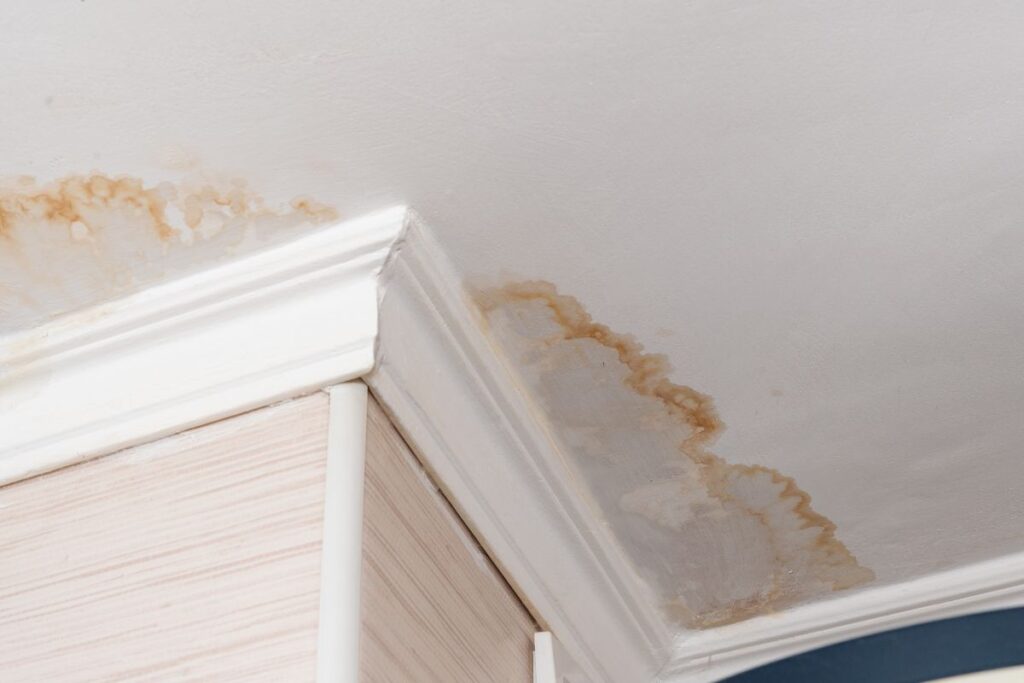
Heavy rain, especially during thunderstorms, frequently results in water damage. Over time, it can lead to major issues if not identified and treated right away:
- Roof Leaks: Water can enter your home through damaged flashing, cracked shingles, or installation errors. This can damage ceilings, walls, insulation, and other areas. Quickly fixing leaks is vital to prevent further damage and mold growth.
- Ice Dams: Ice dams form when snow melts and refreezes at the roof’s edges, blocking water drainage. This causes water to back up under the shingles, leading to leaks inside. Timely action is necessary to prevent damage, especially in cold regions.
- Roof Deck Rot: Over time, water can rot the roof deck, weakening the roof’s structure and potentially causing collapse. Repairing a rotten roof deck involves replacing damaged sections and ensuring proper waterproofing.
- Blocked Gutters: Clogged gutters prevent rainwater from draining properly, resulting in backups under the roof. This can damage ceilings, walls, and other interior components.
Identifying Signs of Roof Storm Damage
To know whether or not you’re dealing with storm damage, it is essential that you keep an eye out for the following signs:
1. Curled or Missing Shingles:

During storms characterized by strong winds, such as hurricanes or severe thunderstorms, asphalt shingles on roofs may become loosened or entirely displaced. The absence of shingles compromises the roof’s protective barrier and necessitates prompt replacement to maintain structural integrity.
2. Dented or Discolored Shingles:
Hailstorms can result in observable marks and alterations in the color of roofing shingles. Identifying dents or discoloration, along with the presence of small indentations or granule loss, signifies potential hail damage, warranting thorough inspection and necessary repairs.
3. Excessive Loss of Shingle Granules:
Roofing shingles are equipped with granules that provide durability and protection against environmental elements. Intense weather conditions, including heavy rain and prolonged sun exposure, can lead to significant granule loss, pointing to the need for roof replacement in order to maintain functionality.
4. Evidence of Water Infiltration:
A storm can compromise a roofing system, contributing to water infiltration in the form of leaks, water stains, or damp spots on interior ceilings and walls. Detecting these underscores the need for quick action, in order to prevent further structural deterioration and further interior damage.
Immediate Action To Take After Discovering Roof Storm Damage
When your roof suffers damage from a storm, it’s important to act quickly and decisively to prevent further issues and safeguard your property. Here’s a comprehensive guide on what to do:
1. Assess the Damage
After the storm passes, conduct a thorough inspection of your roof. Look for visible signs of damage such as missing or damaged shingles, dented flashing, or areas where water may be leaking through. Assessing the extent of the damage will help you determine the necessary repairs accurately.
2. Contact a Professional Roofer
Reach out to a reputable roofing contractor without delay. A qualified roofer will have the expertise to assess the damage and recommend the best course of action. They can provide guidance on repair options, the costs involved, and ensure that repairs are carried out effectively to prevent future issues.
3. Implement Temporary Repairs
While awaiting professional assistance, consider implementing temporary repairs to reduce the chance of further water infiltration. Cover damaged areas with tarps or temporary patches to prevent additional interior damage. These measures can serve as a temporary solution until permanent repairs can be made.
4. Document the Damage
Document the damage thoroughly for insurance purposes. Take detailed photographs or videos of the affected areas from multiple angles. Create an inventory of the damage, including written descriptions. This documentation will assist in your insurance claim and serve as a reference during repairs or inspections.
5. Notify Your Insurance Company
Contact your homeowner’s insurance provider promptly to report the roof storm damage. Provide them with all relevant information, including documentation of the damage. Follow their specific procedures for filing a claim to ensure a smooth process and maximize your chances of receiving adequate coverage for repairs.
6. Prevent Future Issues
Once repairs or replacements are made, take proactive measures to prevent future storm-related damage to your roof. Trim overhanging tree branches and regularly clean debris from gutters to maintain proper drainage and prevent buildup that could lead to leaks. Prioritizing these maintenance tasks can help extend the lifespan of your roof and reduce the risk of future storm damage.
Preventative Measures Against Future Roof Storm Damage
Preventing roof damage upfront is much cheaper than dealing with repairs later on. Taking precautions now can save you a lot of money in the long run. If you’ve just repaired roof storm damage, you’ll want to follow these tips to keep your roof in good condition.
Maintenance Tips:
- Regular Inspections: Check your roof at least twice a year, or after big storms, to catch small issues early.
- Clear Debris: Keep your roof clean by removing leaves, twigs, and branches that can cause leaks.
- Gutter Maintenance: Ensure your gutters are clear to prevent water from pooling on your roof and causing damage.
- Inspect Seals: Check seals around vents and chimneys to keep water out of your home.
- Quick Repairs: Fix any damaged shingles or minor issues promptly to prevent them from worsening during storms.
Utilize Strong Roofing Materials:
- Metal Roofs: Tough against wind, fire, and snow due to their design.
- Rubberized Asphalt Shingles: Better at resisting hail damage, especially in areas prone to hailstorms.
- Class 4 Rated Materials: Materials with this label are tested for impact resistance, providing you with a product that gives you peace of mind during a storm.
Does Homeowners Insurance Cover Roof Storm Damage In Wisconsin?
In Wisconsin, homeowners’ insurance usually pays for roof damage caused by severe weather like storms. This coverage includes things like shingle damage, structural issues, and leaks from a harsh weather event. It may also cover damage from fire, smoke, vandalism, falling objects (like tree branches), burst pipes, accidental water damage, and heavy snow or ice.
However, it’s essential to know that insurance typically doesn’t cover regular wear and tear, neglect, or cosmetic issues that don’t affect the roof’s function. If your roof needs fixing or replacing because of a storm or something else covered by your policy, your insurance company should pay for the costs.
Ensure Long-Term Protection For Your Roof With BRH Enterprises
Dealing with storm-related roof damage can be overwhelming, but with the right checklist and action plan, you can protect your home and keep it safe. By assessing the damage, taking quick action, and hiring a professional, you can prevent further problems and reinforce your home against storms in the future.
If you live in Wisconsin, our team at BRH Enterprises is here for you 24/7, ready to handle all aspects of storm damage repair. We have extensive experience providing the best storm damage roofing services, ensuring you get the compensation you deserve. Our skilled roofing technicians are trained to find and fix any form of storm damage, and can even offer help with your insurance claim! Let us help make your house feel like new again. Call BRH Enterprises today at (920) 249-4228 for a FREE roof inspection.
